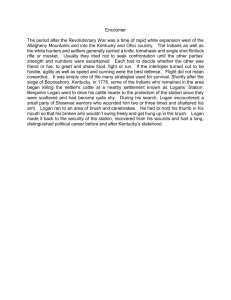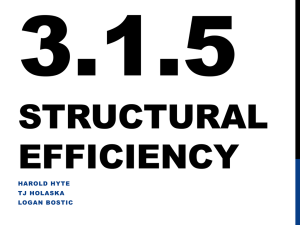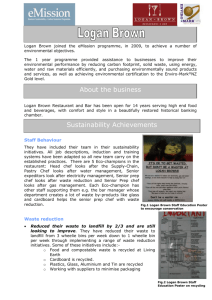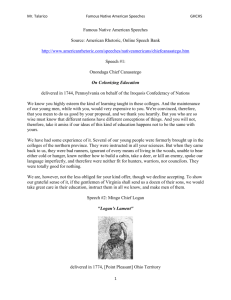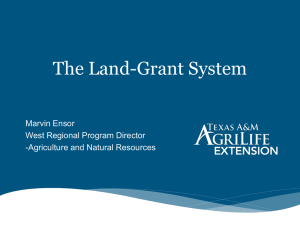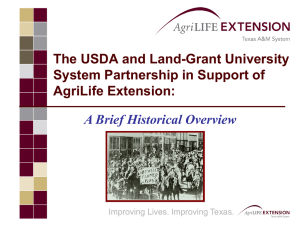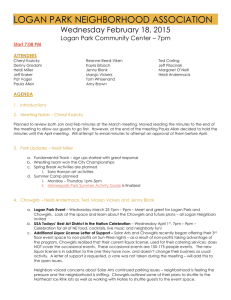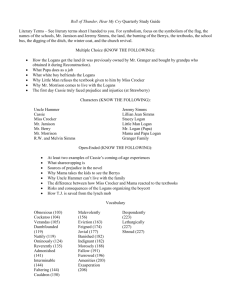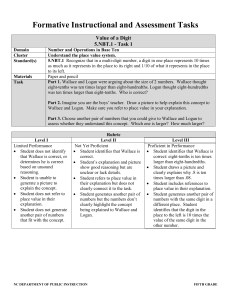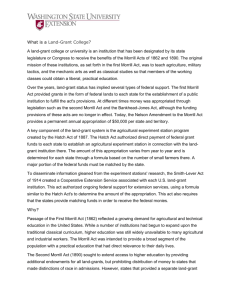100 Years of Extension Service! - Colorado State University Extension
advertisement
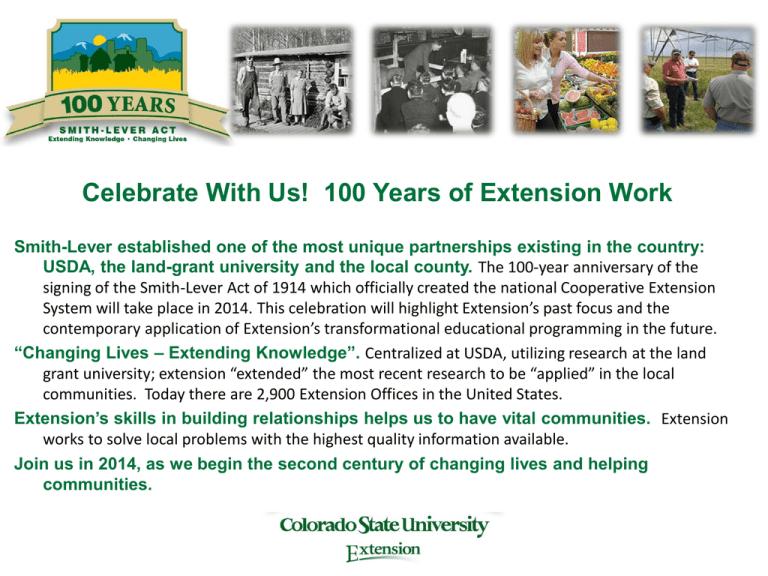
Celebrate With Us! 100 Years of Extension Work Smith-Lever established one of the most unique partnerships existing in the country: USDA, the land-grant university and the local county. The 100-year anniversary of the signing of the Smith-Lever Act of 1914 which officially created the national Cooperative Extension System will take place in 2014. This celebration will highlight Extension’s past focus and the contemporary application of Extension’s transformational educational programming in the future. “Changing Lives – Extending Knowledge”. Centralized at USDA, utilizing research at the land grant university; extension “extended” the most recent research to be “applied” in the local communities. Today there are 2,900 Extension Offices in the United States. Extension’s skills in building relationships helps us to have vital communities. Extension works to solve local problems with the highest quality information available. Join us in 2014, as we begin the second century of changing lives and helping communities. Celebrate With Us! 100 Years of Extension Work 1. 1862- Morrill Act: Granting 30,000 acres of Federal land for every senator and representative. Each state was to sell the land and invest the proceeds in an endowment. The interest was to be used to establish at least one college to teach such branches of learning as those related to agriculture and the mechanic arts. 2. 1890- The Second Morrill Act: The endowments of the 1862 Morrill Act proved inadequate and Morrill was successful in 1890 in securing increased funding through the Second Morrill Act. The 1890 Morrill Act also led to the creation of 17 land-grant universities for black students. 3. 1887- The Hatch Act: This created Agricultural Experiment Stations to conduct research, investigations, and experiments to support a permanent agricultural industry, and the development and improvement of the rural home and rural life. 4. 1914- The Smith-Lever Act: This Act called for cooperative agricultural extension work between the land-grant colleges and the United States Department of Agriculture to diffuse useful and practical information on subjects related to agriculture and home economics to the people of the United States. “As the state’s first county agent, D.C. Bascom toiled with a missionary-like zeal to assist rural Coloradans. Club organization, short courses, field demonstrations, and a traveling library represented part of his duties. In summarizing a single years work, Bascom reported that he had traveled nearly 14,000 miles and written more than 1,200 personal letters.”– Taken from the “Beyond the Ivory Tower, the History of Colorado State University Cooperative Extension. Logan County Extension Agent, D.C. Bascom (1912-1916) Colorado Extension – started with early farmers' institutes conducted offcampus starting in 1879. Research results from the university to rural farmers and homemakers in an effort to improve their quality of life. Logan, El Paso, and Conejos were among the first Colorado counties to begin farm demonstration programs in the autumn of 1912. Logan County Extension Agent, George Burckhalter , (1916-1918) worked to control grasshopper infestations. Logan County Ayrshire Calf Club Colorado Extension – By 1917, when the U.S. joined the war, Extension had begun to fill the role of community organizer and brought together resources to help citizens "fight" on the home front. "Food will win the war" became a popular slogan, and American farmers were encouraged to drastically increase their output to feed the troops. Logan County Extension Agent, James E. Morrison (1918-1931) When the U.S. joined World War II in 1941, Agents organized victory gardens, scrap metal and scrap rubber collection. Home demonstration agents taught farm wives to bake without sugar and to make meals within the constraints of their war rations. 4-H members rotated to different farms in their counties, picking sugar beets, potatoes, melons, and other crops to help bring in the harvest on farms that lacked labor. level. In the 1950s, there began a focus on life skills in addition to the project skills taught in 4H. Property was purchased and renovated in the 1950s in Chevy Chase, Maryland. In 1959, President Dwight D. Eisenhower presided over the opening ceremonies for the National 4-H Center, which quickly became the national home for 4 H, which hosts one of the premier youth leadership and citizenship conferences, Citizenship … Washington Focus for 4-H teens. , Logan County Extension – worked to improve grain varieties and better production methods. Helped to start Great Western Beef Expo and Sugar Beet Days. Research test plots with local farmers. Logan County Extension Agent, James “Jim” Read (1963-1983) Logan County Extension – The Present Wheat Collaborative On-Farm Trials Pesticide Applicator Programs Crop Clinics Young Farmer Talks Logan County Extension – The Present Strong Women Diabetes Education Super Tasters and Mighty Movers Grow Project – Oregon State Research Logan County Extension – The Present Cowboy Ethics Horticulture Answers and Tree Sales Native Plant Masters Robotics Science Outreach Logan County Extension – The Present Cloverbuds – getting youth excited about 4-H at a young age. 4-H Livestock Judging Catch-it Animals The Science in Animal Science Celebrate With Us! The Future What is eXtension? eXtension is an Internet-based collaborative environment where Land Grant University content providers exchange objective, research-based knowledge to solve real challenges in real time. Celebrate With Us! The Future Technology …. We are using it and helping others use it.
